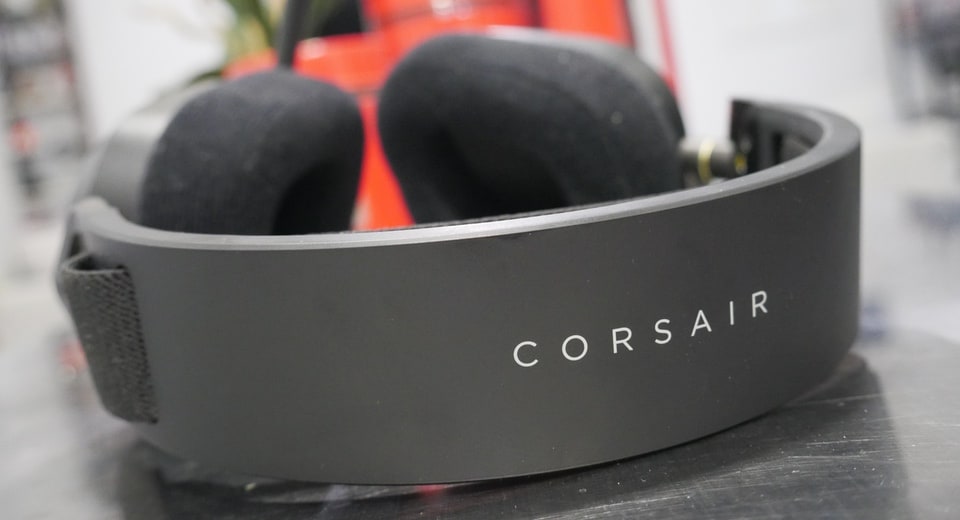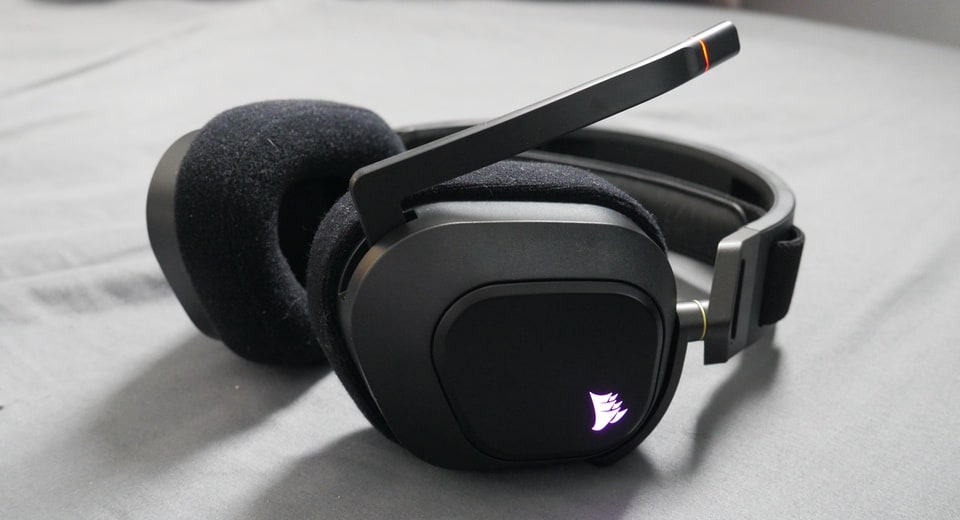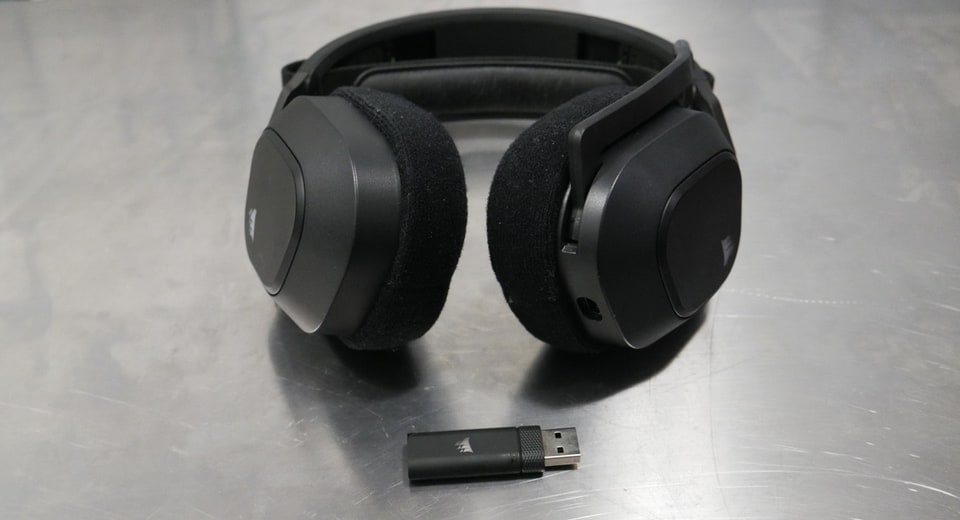A wireless headset may not ever truly beat the consistent audio quality of a wired connection, but it’s hard to ignore the convenience that it provides. I stuck with wired earbuds for on-the-go audio for ages, and only ended up swapping to Bluetooth earbuds so I could discreetly listen to podcasts during my part time retail job. Moving to a wireless solution for my at-home audio is a similar story of prioritizing convenience and comfort. Do the Corsair HS80 headphones offer top of the pyramid audio quality? Not quite, but with all the other pros of these sleek new wireless headphones, it hardly matters.

I’m always a stickler for sleek and professional designs on gamer gear. Many headsets tend to lean into the gamer aesthetic a little too hard with neon colors and spaceship silhouettes. Thankfully, Corsair has consistently gone for a more discreet and low-key look for their products, and the Corsair HS80 is no exception. The all black headset has metal rotating hinges that connect the retro-polygonal earcups to the matte black headband. RGB has also been kept to an absolute minimum here – the small logos on the earcups can glow, and there are discreet RGB indicators for your mic and battery status, but that’s it. It’s a gorgeously designed headset, and easily the kind of gear you could rock in any level of professional or casual setting without raising eyebrows.
Rather than the usual pull-in/pull-out adjustability on hinges, the headset has a suspended plush support band just below the hard-plastic headband. You adjust it with cloth tabs tucked discreetly into the headset, not unlike the way you adjust the fit of a baseball cap. Aesthetically, it adds an interesting extra element to the silhouette of the headset, and the cloth material contrasts with the hard plastics and metals of the main body. In terms of comfort, the headband is a brilliant addition and one that’s seing increasing adoption across plenty of headsets. The band offers solid resistance against the top of my head without feeling course or unpleasant. It also prevents any accidental alterations to the earcup fit that might happen if you handle a traditional headset too roughly.

In the past, I’ve run into a major issue with wireless headphones where the battery life made it hard to consistently rely on them as my go-to audio solution. Whether you’re starting with a charged headset in the morning and having it run on empty by the late evening, or simply forgetting to plug them in to charge after a few gaming sessions, it’s never a pleasant experience for them to run out. Thankfully, the Corsair HS80 rocks a more than reliable battery life. They aren’t able to run for dozens of hours off one charge like you’d get from Bluetooth earbuds, but I measured out a decent average of about 15 hours of battery life. Plus, on the occasions when I’d have to charge the headphones, the tank was fully charged surprisingly quickly.
Better yet. I don’t need to stop using the Corsair HS80 when it’s time to charge. The headset offers USB-C plug-and-play, allowing you to use it wired while it charges back up. You’ll even get slightly sharper audio quality during wired mode, which had me tempted to use the set almost exclusively with a wire. Unfortunately, the USB-C connection to the headset can be pretty finicky. The slightest movement to the connection can cause it to temporarily disconnect from the PC, leading to plenty of moments where I’d get up from my seat or adjust my neck and have the headset abruptly stop working.

The Corsair HS80 runs off of the same iCue configuration software that the other current Corsair gear does, allowing you to adjust audio settings, change or disable the RGB, and customise your sound profile. You can even save settings profiles for the HS80 like you can for your Corsair keyboards and mice – letting you press a single button to swap all of your gear from casual-computing mode to a gaming-optimised mode.
I would recommend avoiding some of the default sound profiles offered in iCue, though. The regular balance is pretty bass-y with a good balance by default that packs a noticeable oomph, and the sound profiles disturb that balance. I’m not exactly an audio snob, but the default Bass Boost setting was simultaneously the muddiest and quietest audio I’ve ever heard come out of my PC.
The microphone arm flips down for when you need it and gets out of the way for when you don’t. It’s a pretty rigid design, though, and can’t be bent freely to match with your mouth. At it’s neutral position, it actually sits farther from the lips than most headsets I’ve used, leading to me having to bump up the input volume a bit on PlayStation but still not sacrificing voice quality.
- About
- Absolute
- across
- Adoption
- aesthetic
- All
- Allowing
- ARM
- audio
- average
- Baseball
- battery
- Bit
- Black
- bluetooth
- body
- Cause
- change
- charge
- charged
- charges
- could
- Current
- Design
- Discreetly
- down
- dozens
- During
- experience
- fit
- Gaming
- Gear
- good
- having
- head
- headphones
- Headset
- here
- HTTPS
- i
- IT
- Job
- leading
- Level
- major
- Match
- Matters
- May
- metal
- mice
- more
- movement
- Neon
- offer
- Offers
- Other
- PC
- plastics
- playstation
- Plenty
- Plus
- Podcasts
- press
- Products
- professional
- Profile
- Profiles
- Pros
- quality
- RE
- recommend
- retail
- review
- Run
- s
- SEAT
- set
- setting
- small
- So
- Software
- solution
- Status
- Story
- support
- The
- time
- top
- traditional
- USB-C
- Voice
- volume
- Wire
- wireless
- working











